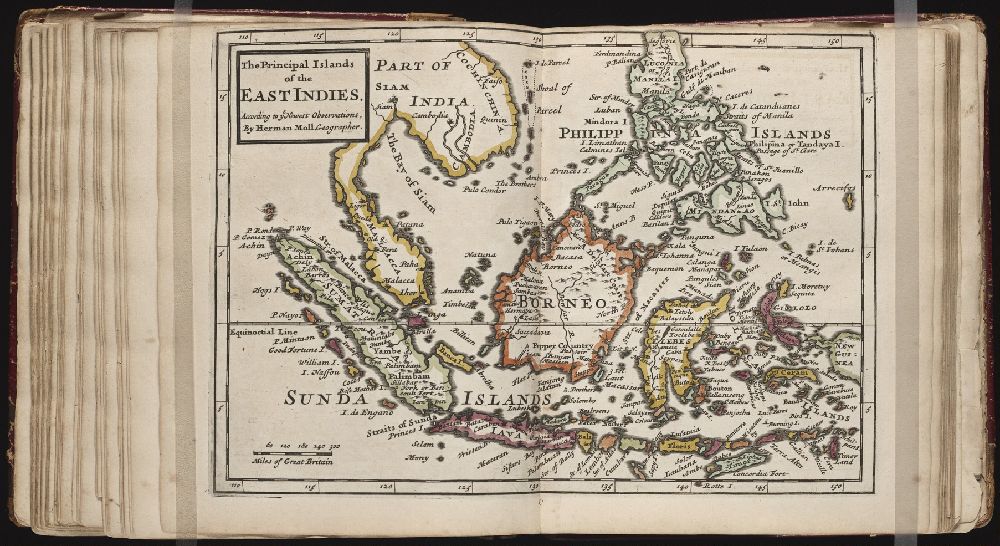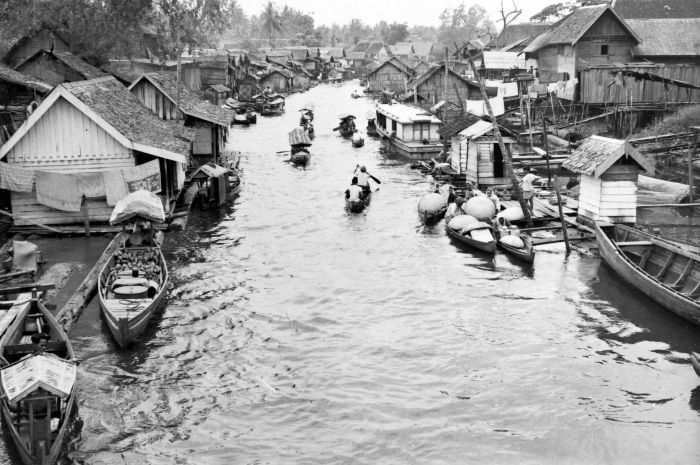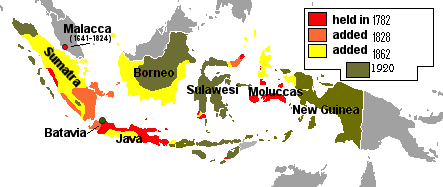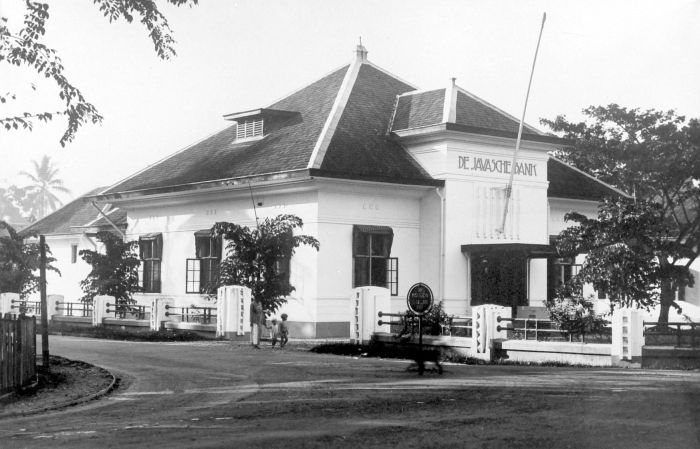“By wisdom a house is built, and through understanding it is established;”
Proverbs 24:3 (NIV)
Lord Jim
“The seventeenth-century traders went there for pepper, because the passion for pepper seemed to burn like a flame of love in the breast of Dutch and English adventurers about the time of James the First. Where wouldn’t they go for pepper! For a bag of pepper they would cut each other’s throats without hesitation … the bizarre obstinacy of that desire made them defy death in a thousand shapes; the unknown seas, the loathsome and strange diseases; wounds, captivity, hunger, pestilence and despair.”
Joseph Conrad (1900)
Banjarmasin City
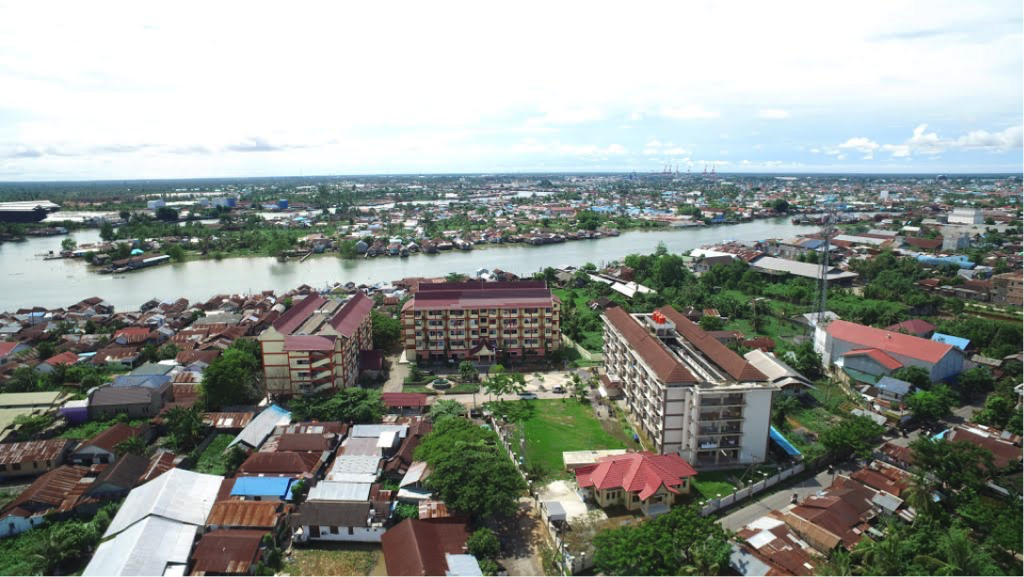
1.0 Geographic Overview
Location: Banjarmasin, nestled in the heart of Borneo, serves as the proud state capital of South Kalimantan. Its cityscape spans across 98 square kilometres, while the broader metropolitan expanse stretches over an impressive 3,404 square kilometres.
Population: As of the year 2020, the vibrant Banjarmasin City is home to approximately 732,000 residents. Projections anticipate a substantial growth, with the population expected to soar to 2.9 million by the year 2050.
Maritime Charms: Banjarmasin graces the southern coastline, gazing out upon the enchanting Java Sea. Aptly nicknamed the “River City,” it stands at the confluence of the Barito and Martapura rivers. The province is endowed with lush forests adorned with treasures such as teak, ebony, and other exotic hardwood species.
Distance: Distance from Banjarmasin to other capital and major cities in Borneo:
| City | Distance (km) |
| Balikpapan | 336 |
| Bandar Sri Begawan | 912 |
| Banjarmasin | 1,046 |
| Kuching | 718 |
| Pontianak | 689 |
| Samarinda | 418 |
| Tarakan | 808 |
Climate and Location:
Banjarmasin sits at 3.3° south of the equator, experiencing a tropical climate with an annual rainfall of 2,415 mm and an average temperature of 26.7 °C. The city, characterized by warm and humid conditions, sees frequent rain and sunshine. The floating market on the river showcases tropical fruits and women in colourful sarongs.
Riverside Living:
Known as the “River City,” Banjarmasin’s rivers and streams feature dwellings on stilts along the riverbank. As the sun sets, the rivers offer a serene atmosphere, with palm leaves swaying in the breeze and the scent of coconut milk-infused rice filling the air.
Historical and Gem Industry:
- Banjarmasin served as a significant trading hub for rare diamonds, precious rubies, and high-quality gems from the 15th to the 19th century.
- The Dutch mined around 50,000 carats of diamonds during the 18th century, with the 38-carat Banjarmasin Diamond now housed in the Rijksmuseum in Amsterdam.
- The Cempaka mine in South Kalimantan, one of the world’s largest diamond mines, boasts an estimated reserve of 32.9 million carats and produces the 166-carat Trisakti Diamond. Banjarmasin also functioned as the capital of Dutch Borneo.
Unique Attributes:
- Banjarmasin, as the largest city in Kalimantan, offers ample land for tourism, agriculture, and manufacturing.
- Its central location within the Asia Pacific region positions it as a strategic hub.
2.0 History
| Event | Year |
| Established | 1526 |
| Dutch Trade | 1606 |
| British Trade | 1614 |
| Dutch Protectorate | 1787 |
| Japanese Occupation | 1942 |
| Indonesia Government | 1949 |
Capital Legacy:
The Port of Banjarmasin held the esteemed position of being the capital of Dutch Borneo, a designation that persisted even after the establishment of the Indonesian Government. Today, it stands as the capital of South Kalimantan, embodying a rich historical legacy.
Unique Attributes:
As a former Dutch colony, Banjarmasin’s roots delve deep into the 16th century, carrying with it a diverse and intricate cultural history. The city’s evolution, shaped by its colonial past, contributes to a unique tapestry of traditions and heritage.
3.0 Economy
Economic Overview:
Banjarmasin, situated in South Kalimantan, Borneo, is recognized for its intricate waterways, earning it the title “Venice of Kalimantan.” The region is a major supplier of wood in Indonesia.
Main Economic Drivers:
The city’s economy revolves around transportation, manufacturing, and trading, with a focus on processing plywood, rattan, and rubber. Key manufacturing industries include food processing, furniture making, timber, chemicals, and rubber.
- Tourism:
- Banjarmasin has untapped tourism potential, serving as a gateway to other South Kalimantan destinations. Attractions include river tours, diamond shopping, rainforests, and wildlife.
- Industry:
- The city is home to a thriving construction and boat-building industry, with active shipyards along the riversides.
- Transportation Hubs:
- Syamsudin Noor International Airport connects the city to major Asian cities, handling up to 10 million passengers annually. Seaports like Trisakti facilitate exports of logs, rubber, coal, and rattan.
- Oil & Gas:
- South Kalimantan, rich in coal bed methane (CBM), contributes significantly to Indonesia’s CBM reserves. Planned gas pipelines aim to enhance regional connectivity.
- Agriculture:
- The fertile land supports agriculture, yielding rice, cassava, corn, pepper, rubber, and timber.
- Mining:
- The city plays a role in diamond, gold, and coal mining.
Unique Attributes:
Banjarmasin holds economic opportunities in agriculture and mining, leveraging a sizable local talent pool for future development initiatives.
4.0 Language
In Banjarmasin city, Banjarese, Malay, Chinese, and English are the predominant languages.
Commonly Spoken Languages:
- Banjarese
- Malay
- Chinese
- English
Unique Feature:
The prevalence of the Malay language serves as a unifying factor for effective communication across various sectors. This common linguistic thread facilitates seamless interaction in government, business, and local communities within Borneo Island.
5.0 Investment Opportunities
5.1 New Migration:
- The new migration program presents opportunities for innovation, skilled workforce integration, and input from international specialists. This influx of expatriates and regional labour is anticipated to elevate the population from 0.7 million to a projected 2.9 million in 30 years.
- Expansion plans cover a radius of 30 km, including districts like Mandomia, Kulakepaus, Martapura, Banjarbaru, Pelahari, Pangkuh, and Bahaur.
5.2 Airport:
- Syamsudin Noor International Airport expansion aligns with the increased population and business activities, facilitating direct flights to major Asian cities. It aims to become a pivotal logistic hub in Borneo, integrating transportation services.
5.3 Education:
- The absence of international schools presents an immediate need for 2-3 schools to cater to expatriates and migrants. The target market includes western expatriates, migrants from Indonesia, and workers from Asia.
5.4 Tourism:
- Banjarmasin’s tourism sector requires strategic vision, planning, and foreign investment. Niche markets like unexplored rainforest trails, wildlife, eco-tourism, diverse culture, and tropical living offer potential. Proximity, cost-effectiveness, and Borneo’s pristine forest make it appealing to Asia Pacific tourists.
5.5 Infrastructure:
- Highway: New interstate highways connecting Banjarmasin to major provincial capitals.
- Rail: Trans-Kalimantan rail network linking major capital cities.
- Water: New water treatment plants to accommodate the city’s growth.
5.6 Property Development:
- Residential: Planning for an additional 2 million dwellings.
- Commercial: Development of theme-based shopping malls for an expected influx of 10 million tourists.
5.7 Special Economic Zones (SEZ):
- Food: Processing and manufacturing in food industries, including flour, noodles, and cooking oil.
- Agriculture: Increased production of staple crops, downstream industries for edible oil, animal feed, and food production. Focus on tropical fruits and fresh vegetables for niche markets.
- Cold Chain: Formation of a cold chain network to position Borneo as the logistics hub for the Asia Pacific region.
- Mining: Exploration and processing of diamond, rare gems, and coal.
- Aquaculture: Production of marine, seaweed, and fisheries products for regional and export markets.
- Timber: Reforestation plantation, downstream sawmills for furniture and export industries.
